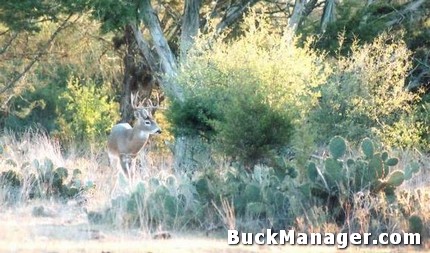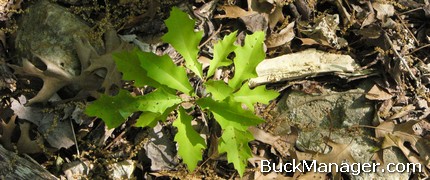Managing for good white-tailed deer habitat on a property is the key to maintaining a healthy deer herd. Plain and simple, deer in good body condition are more productive than deer in poor condition. A problem many landowners face is that Mother Nature does not always do her part. This is the major reason why supplemental feeding has become an integrated part of deer management on many ranches.
A property can generally have good deer habitat, but that does not necessarily mean that the plants found on the property are in good condition. Rainfall makes a big difference from year to year. In fact, research conducted in South Texas, on what was coined the “South Texas Buck Project,” by the Caesar Kleberg Wildlife Research Institute at Texas A&M-Kingsville found that spring rains explained 70% of the year to year variability in buck antler size.

Spring rain and antler growth were highly correlated, meaning bucks grew larger antlers following wet springs and smaller antlers following dry ones. During the South Texas Buck Project, researchers classified spring rains as those occurring during March, April and May. And over much of the whitetail’s range, it is during this time of the year when good rainfall can produce bountiful crops of high protein forbs and set up browse plants for the long, hot, and typically dry summer. If the rains do not arrive, then deer can forget about the would-be protein buffet.
Okay, so I will admit that South Texas is much different than many parts of the white-tailed deer’s range, including most parts of Texas, but the results of this study are a bit staggering. The data collected during the South Texas Buck Project conclusively found that spring rains alone accounted for as much as a 20 inch shift in gross Boone and Crockett scores for mature bucks! These findings really illustrate the importance of precipitation, habitat condition and food availability to any landowner or hunter interested in deer management.

So this all makes enough sense, but how can it help hunters on their property given that they can not control the rain? Well, no one can turn on the faucet that makes it rain, but hunters can control whitetail food availability through management practices such as maintaining proper livestock grazing rates, brush management, prescribed burning, supplemental feeding and managed deer harvest. Allowing deer to grow older is one way to produce more mature bucks, but age is not the only factor that affects antler size.
In mature bucks, rainfall determines whether that 20 inch shift I mentioned previously ends up being 20 inches up or 20 inches down. Food availability is of utmost importance in allowing old bucks to reach their genetic potential. For hunters interested in trophy buck management, I would seriously considering shooting any buck 5 1/2 years of age following a wet spring. Why? For the simple reason that the chances of getting two good years in a row are slim, and therefore antlers are not likely to be better the next year. During a dry spring, such as this one, hunters may want see if those deer can add that 20 inches back on next year.